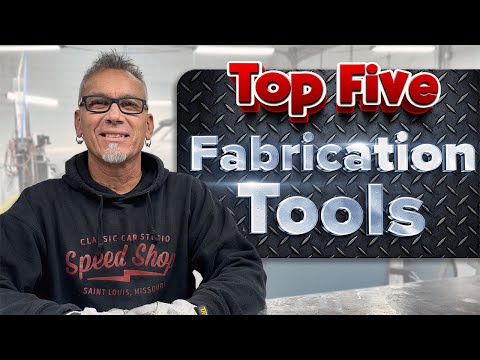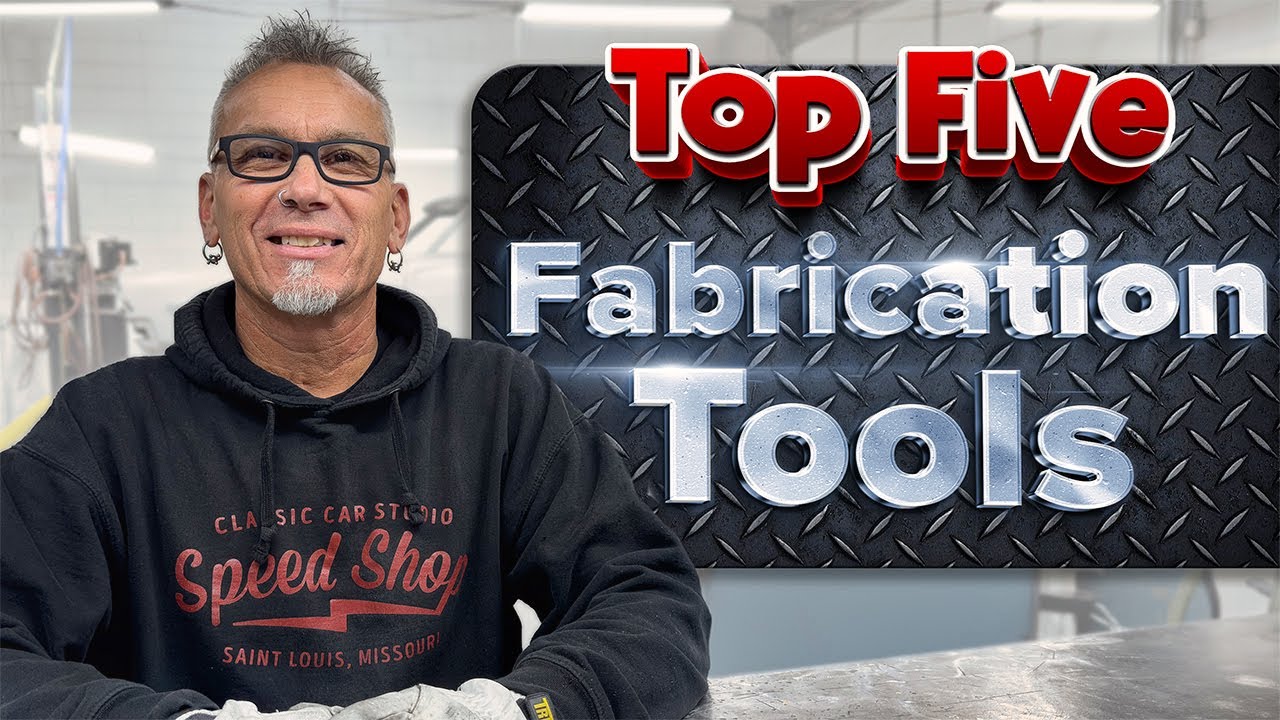Automotive fabrication is a fascinating process that brings together creativity, precision, and innovation to transform raw materials into stunning automotive masterpieces. Whether it’s the sleek bodywork, the intricate interior design, or the powerful engine modifications, automotive fabrication is an art form that never fails to captivate car enthusiasts. With meticulous attention to detail, skilled fabricators employ cutting-edge techniques to shape and mold metal, carbon fiber, and other materials into stunning components that enhance both the aesthetics and performance of a vehicle. From customizing classic cars to creating unique prototypes, the world of automotive fabrication offers endless possibilities for those with a passion for craftsmanship and design. Unleashing their talent, fabricators push the boundaries of what’s possible, turning ordinary vehicles into extraordinary works of art. By combining traditional craftsmanship with modern technology, they seamlessly blend form and function, resulting in automotive creations that are as visually striking as they are high-performing. So, whether you dream of owning a show-stopping custom car or simply appreciate the beauty of automotive design, automotive fabrication is sure to ignite your imagination and fuel your passion for all things on wheels.

The Art of Automotive Fabrication
Automotive fabrication is a specialized field that involves the creation and modification of various components and structures for vehicles. It is an essential part of the automotive industry, providing solutions for customizing, restoring, and improving vehicles. This article explores the fascinating world of automotive fabrication, its techniques, applications, and the importance it holds in the automotive world.
What is Automotive Fabrication?
Automotive fabrication refers to the process of designing, creating, and modifying vehicle components using various materials like metal, plastic, and composites. It involves a wide range of techniques, including welding, cutting, bending, and shaping, to transform raw materials into functional parts for vehicles. Fabricators often work with engineers and designers to bring their ideas to life and create unique solutions for automotive challenges.
Techniques and Tools Used in Automotive Fabrication
Welding is one of the primary techniques used in automotive fabrication. It involves joining two or more pieces of metal together using heat and pressure. Common welding methods include MIG (Metal Inert Gas), TIG (Tungsten Inert Gas), and arc welding. These techniques allow fabricators to create strong and durable connections between various vehicle components.
Cutting is another crucial process in automotive fabrication. Various cutting methods, such as plasma cutting, laser cutting, and waterjet cutting, are used to shape and remove excess material. These techniques ensure precision and accuracy in creating vehicle components.
Bending and Shaping involve manipulating the shape of materials to fit specific vehicle designs. This is done using tools like press brakes, rollers, and hammers. These techniques are used to create curves, angles, and intricate shapes, ensuring components fit seamlessly into the vehicle’s structure.
Forming and Molding techniques are used to create plastic and composite components for automotive applications. Vacuum forming, injection molding, and fiberglass layup are common methods used to produce complex shapes and structures. These techniques offer flexibility and versatility in designing lightweight and durable vehicle parts.
Importance of Automotive Fabrication
Automotive fabrication plays a vital role in the automotive industry for several reasons.
Customization and Personalization
One of the significant benefits of automotive fabrication is the ability to customize and personalize vehicles. Car enthusiasts and collectors often seek unique modifications to make their vehicles stand out. Fabrication allows for the creation of custom body panels, interior modifications, and performance enhancements, giving individuals the opportunity to express their personal style and preferences.
Restoration and Preservation
Automotive fabrication is crucial in restoring and preserving vintage and classic vehicles. These cars often require replacement parts that may no longer be available. Fabricators can recreate these parts, ensuring the integrity and authenticity of the vehicle. This process allows car enthusiasts to bring historic vehicles back to their original glory.
Performance Enhancement
Fabrication techniques are used to enhance the performance of vehicles. Custom exhaust systems, suspension modifications, and aerodynamic improvements can be achieved through fabrication. These modifications can significantly impact a vehicle’s speed, handling, and overall performance, catering to the needs of motorsport enthusiasts and performance car owners.
Repair and Maintenance
Automotive fabrication also plays a crucial role in repair and maintenance. When a vehicle requires a specific part that is no longer available or too expensive to replace, fabricators can recreate it. This allows for cost-effective repairs and ensures that vehicles can continue operating safely.
The Future of Automotive Fabrication
The field of automotive fabrication continues to evolve with advancements in technology and materials. As electric vehicles become more prevalent, fabricators will face new challenges and opportunities. The need for lightweight and efficient components will drive the development of innovative fabrication techniques and materials.
Furthermore, the rise of additive manufacturing, commonly known as 3D printing, is revolutionizing automotive fabrication. This technology allows for the creation of complex parts with minimal waste and faster production times. As the technology progresses, it is expected to become an integral part of the automotive fabrication process.
In conclusion, automotive fabrication is a fascinating field that combines artistry, engineering, and craftsmanship. With its various techniques and tools, it enables customization, restoration, performance enhancement, and cost-effective repairs in the automotive industry. As technology advances, the future of automotive fabrication looks promising, with new possibilities on the horizon.
“Essential Tools for Aspiring Fabricators: Top 5 Must-Haves”
Video Source : Classic Car Studio
Automotive Fabrication
Automotive Fabrication
| Component | Material | Manufacturing Process |
|---|---|---|
| Chassis | High-strength steel | Hydroforming |
| Body Panels | Aluminum alloy | Stamping and deep drawing |
| Exhaust System | Stainless steel | TIG welding |
| Suspension Arms | Forged aluminum | CNC machining |
| Engine Block | Cast iron | Sand casting |
In automotive fabrication, various components are carefully crafted using specific materials and manufacturing processes to ensure optimal performance and durability. Let’s explore some interesting information about these components:
1. Chassis: The backbone of a vehicle, the chassis is commonly made from high-strength steel. To shape the complex geometries required for structural integrity and weight reduction, hydroforming is employed. This process involves using pressurized fluid to shape the steel into the desired form, resulting in a strong and lightweight chassis.
2. Body Panels: For enhanced fuel efficiency and improved handling, many modern cars incorporate lightweight aluminum alloy body panels. These panels are manufactured through stamping and deep drawing processes. Stamping involves using a press to cut and shape the flat aluminum sheets, while deep drawing creates three-dimensional shapes by pulling the material into a die.
3. Exhaust System: To withstand high temperatures and resist corrosion, stainless steel is the material of choice for exhaust systems. Expert craftsmen employ TIG (Tungsten Inert Gas) welding to meticulously join the stainless steel pipes and components. This process ensures a clean and precise weld for optimal exhaust flow and longevity.
4. Suspension Arms: Suspension arms play a crucial role in providing a comfortable ride and precise handling. Forged aluminum is the preferred material due to its excellent strength-to-weight ratio. Computer Numerical Control (CNC) machining is employed to precisely shape and refine the suspension arms, ensuring optimal performance and reducing unsprung weight.
5. Engine Block: The engine block acts as the foundation of the powertrain, housing various internal components. Traditionally, cast iron has been the material of choice due to its superior heat dissipation and durability. Sand casting, a time-honored technique, is utilized to create intricate engine block molds. Molten iron is then poured into these molds, allowing for the formation of complex internal passages and precise tolerances.
In the world of automotive fabrication, the selection of materials and manufacturing processes is vital to achieve the desired performance, safety, and efficiency. By expertly crafting each component, automotive engineers create vehicles that not only excel in design but also provide an exceptional driving experience.

